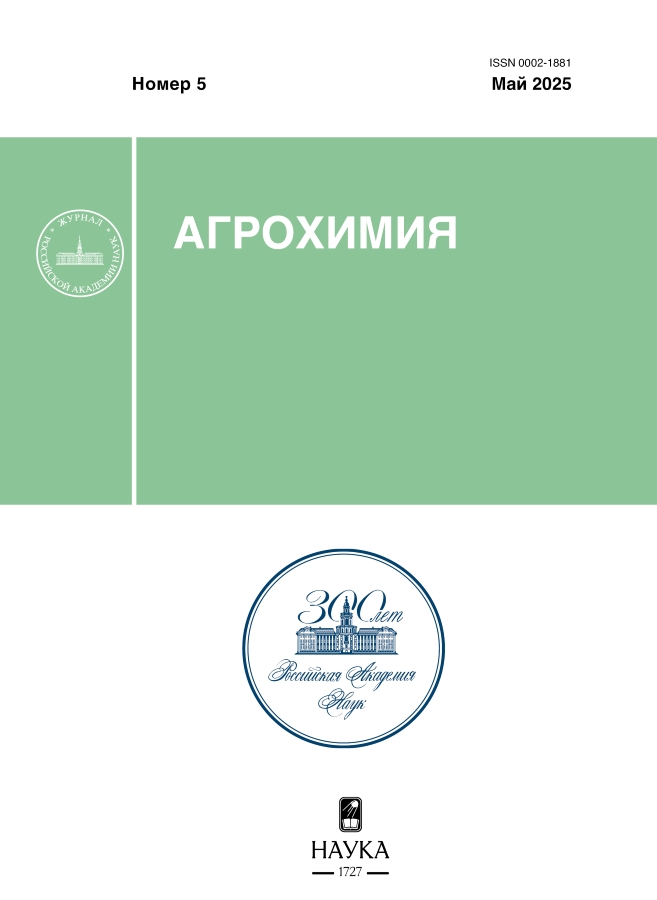Microorganisms of the nitrogen cycle in technogenically polluted urban soils
- 作者: Najafova S.I.1, Bagirova C.Z.1
-
隶属关系:
- Institute of Microbiology of the Ministry of Science and Education of Azerbaijan
- 期: 编号 5 (2025)
- 页面: 96-100
- 栏目: Ecotoxicology
- URL: https://rjdentistry.com/0002-1881/article/view/685263
- DOI: https://doi.org/10.31857/S0002188125050124
- EDN: https://elibrary.ru/TTZWUC
- ID: 685263
如何引用文章
详细
Associations of nitrogen exchange microorganisms function in the soil in close interdependence, forming a complex biosystem with close trophic and energy relationships. In the technogenic soils of Sumgait, favorable conditions have been created for the development of all physiological groups of microorganisms involved in the nitrogen cycle, with the exception of nitrifying ones. It is possible to use a consortium of nitrogen bacter cultures and microbiocenosis of excess activated sludge in order to increase the biogenicity and productivity of technogenically polluted soils in Sumgait.
全文:
作者简介
S. Najafova
Institute of Microbiology of the Ministry of Science and Education of Azerbaijan
编辑信件的主要联系方式.
Email: nadjaovas@yahoo.com
阿塞拜疆, M. Mushviq str. 103, Baku 1004 AZ
Ch. Bagirova
Institute of Microbiology of the Ministry of Science and Education of Azerbaijan
Email: nadjaovas@yahoo.com
阿塞拜疆, M. Mushviq str. 103, Baku 1004 AZ
参考
- Мамедов Г.Ш., Исмаилов Н.М. Научные основы и принципы районирования почв Азербайджана по устойчивости к загрязнению органическими веществами. Баку: Елм, 2006. 203 с.
- Наджафова С.И. Почвенный покров г. Баку и пути восстановления его биологических свойств // Природные и антропогенные изменения аридных экосистем и борьба с опустыниванием: мат-лы Международ. научн.-практ. конф. Махачкала, 2016.С. 81–83.
- Nadjafova S.I., Ismailov N.M. Integral indicator of technogenic soil disturbance in Аbsheron peninsula // Biol. Chem. Res. Delaware, USA, 2016. V. 3. Р.143–150.
- Nadjafova S.I. Bioecological characteristics of the soil in Baku // 9th Inter. Euras. soil congr. on “The Soul of Soil and Civilization”, Turkey, 2014. р. 860–862.
- Градова Н.Б., Горнова И.Б., Эддауди Р., Салина Р.Н. Использование бактерий рода Azotobacter при биоремедиации нефтезагрязненных почв // Прикл. биохим. и микробиол. 2003. Т. 39. № 3. С. 318–321.
- Артамонова В.С. Микробиология процессов почвообразования в нарушенных ландшафтах // Антроп. трансформация природн. среды. 2012. № 1. С. 11–20.
- Злотников А.К., Кожевин П.А. Динамика численности ассоциации азотфиксирующих бактерий B. firmus и K. terrigena в периодической культуре и при интродукции в ризосферу // Проблемы физиологии микроорганизмов (к 100-летию со дня рождения Е.Е. Успенского). М.: Изд-во МГУ, 2000. С. 60.
- Цавкелова Е.Л., Климова С.Ю., Чсрдынцева Т.Л., Нетрусов Л.И. Микроорганизмы-продуценты стимуляторов роста растений и их практическое применение (обзор) // Прикл. биохим. и микробиол. 2006. Т. 42. № 2. С. 133–143.
- Бабаев М.П., Рамазанова Ф.М., Наджафова С.И. Почвы Азербайджанской Республики. Орошаемые почвы Кура-Араксинской низменности и их производительная способность. М.: Lambert, 2019. 275 с.
- Практикум по микробиологии. / Под ред. А.И. Нетрусова. М.: Академия, 2005. 608 с.
- Руководство к практическим занятиям по микробиологии / Под ред. Егорова Н.С. М.: Изд-во МГУ, 1995. С. 130–132.
- Trofimov I., Pavliukh L., Novakivska T. Assessment of phytotic toxicity of mixed aviation fuels using of plant testers // Inter. Independ. Sci. J. 2020. № 11. P. 9–17.
- Другов Ю.С., Родин А.А. Анализ загрязненной почвы и опасных отходов. Практ. рук-во. М.: Бином, 2007. 263 с.
补充文件














